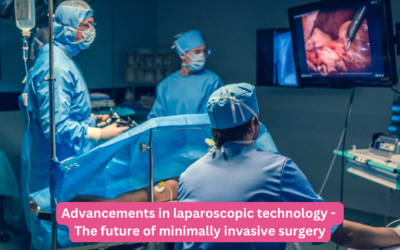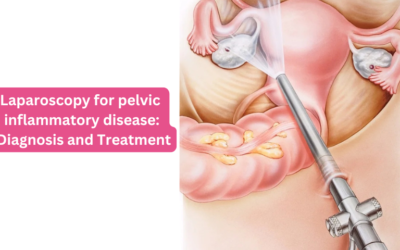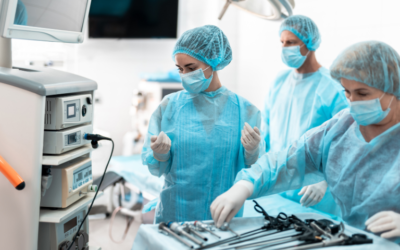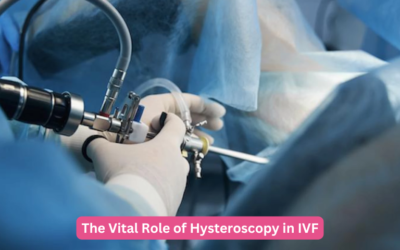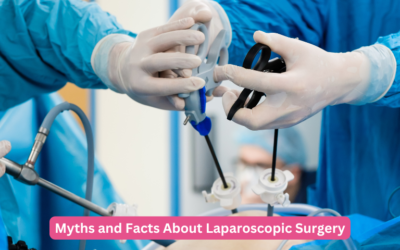What is Hysteroscopy?
Hysteroscopy is a medical technique used by gynecologists to visualize the inside of the uterus using a hysteroscope, a thin, lighted instrument. This procedure provides detailed images of the uterine lining and can assist in diagnosing and treating various gynecological conditions.
- Diagnostic Hysteroscopy: A diagnostic hysteroscopy is used to assess the uterine cavity and detect abnormalities such as polyps, fibroids, adhesions, or septums. It is a valuable tool for assessing infertility issues, abnormal bleeding, and chronic pelvic pain.
- Operative Hysteroscopy: An operative hysteroscopy goes a step further by allowing the physician to perform minor surgical procedures. This may include the removal of polyps, fibroids, adhesions, septums, or other growths. The operative hysteroscopy can be a treatment option for conditions that affect fertility, menstrual cycles, and overall uterine health.
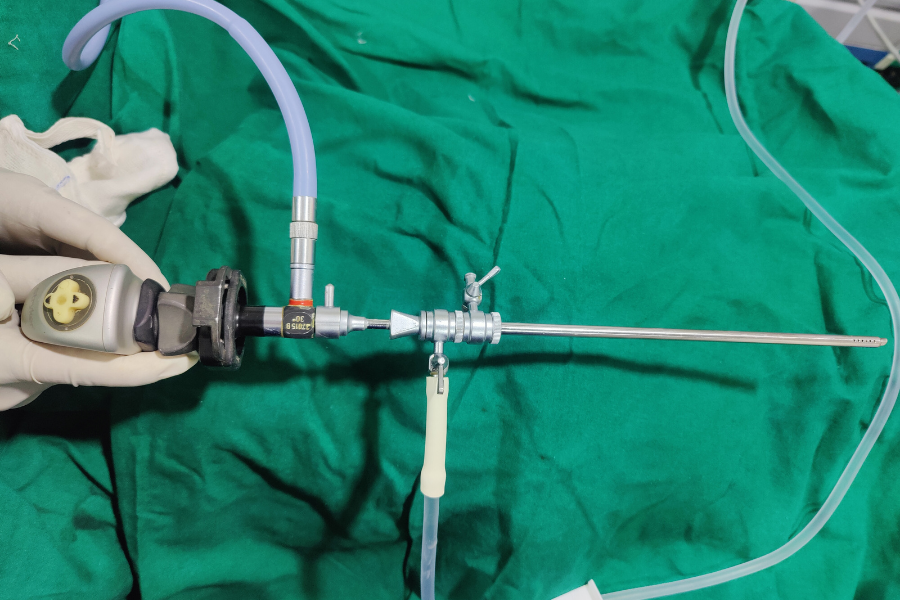
Who needs Hysteroscopy?
- Women experiencing abnormal uterine bleeding: Those who suffer from heavy, irregular, or prolonged menstrual cycles.
- Patients with suspected uterine abnormalities: Such as polyps, fibroids, or septums.
- Women facing infertility issues: Those with unexplained infertility or anatomical issues affecting conception.
- Individuals with chronic pelvic pain: Persistent pain that has not responded to other treatments.
- Women needing pre-surgical assessment: Prior to undergoing a more invasive surgical procedure.
Benefits of Hysteroscopy
- Minimally invasive: Both diagnostic and operative hysteroscopies are minimally invasive, meaning they typically involve shorter recovery times and less discomfort compared to traditional surgical methods.
- Precision: The procedure offers high precision in diagnosing and treating uterine conditions, allowing for targeted interventions without affecting surrounding tissues.
- Rapid recovery: Patients experience a quicker return to daily activities, with minimal downtime.
Diagnostic Hysteroscopy Procedure
During a diagnostic hysteroscopy, the patient is generally given local anesthesia. The physician uses a hysteroscope, which is inserted into the uterus through the cervix. The scope allows the physician to visualize the uterine lining and identify any abnormalities.
Step-by-Step Process:
- Preparation: The patient may be given medication to manage discomfort.
- Insertion of Hysteroscope: The hysteroscope is gently inserted into the uterus.
- Visualization: The physician examines the uterine cavity using the hysteroscope.
- Image capture: Images of the uterine lining and any abnormalities are captured for analysis.
- Conclusion: The procedure generally takes about 10 to 30 minutes, and patients are monitored briefly before being released.

Recovery and Outcomes: Most patients can return to normal activities immediately after the procedure. Results are typically available shortly after the procedure.
By understanding each step of the diagnostic and operative hysteroscopy, patients can approach their treatment with confidence, knowing that they are in capable hands at Shukan Hospital & IVF Centre.
Operative Hysteroscopy Procedure
An operative hysteroscopy requires a similar approach but often involves additional steps. The physician may perform surgical interventions, such as removing growths, correcting septums, or treating adhesions.
Step-by-Step Process:
- Preparation: Similar to diagnostic hysteroscopy, anesthesia is administered.
- Insertion of Hysteroscope: The hysteroscope is inserted into the uterus.
- Surgical intervention: Using specialized instruments passed through the hysteroscope, the physician performs the required surgery.
- Image capture: Detailed images are taken during the procedure for precise outcomes.
- Conclusion: The procedure usually takes 30 to 60 minutes, depending on the extent of the surgery.
Recovery and Outcomes: The recovery time varies depending on the surgical intervention. Most patients can resume normal activities within a day or two.
Risks of Hysteroscopy
Like any medical procedure, hysteroscopy carries certain risks, although they are relatively rare. Some potential risks include:
- Infection: There is a small risk of infection following the procedure. Patients are monitored closely, and antibiotics may be prescribed if necessary.
- Bleeding: Some minimal bleeding may occur, particularly if a surgical intervention was performed. Heavy or prolonged bleeding should be reported to the physician.
- Uterine perforation: In rare cases, the hysteroscope may cause a small tear or perforation in the uterine lining. This is typically minor and treated promptly by the physician.
- Adverse reaction to anesthesia: Although anesthesia complications are rare, there is a slight risk of an adverse reaction, such as nausea or dizziness.
- Fluid overload: This can occur if the fluid used during the procedure to expand the uterine cavity is absorbed in large quantities. It can be monitored and managed by the physician.
At Shukan Hospital, we minimize these risks through meticulous surgical planning, advanced technology, and comprehensive pre-operative and post-operative care.
Why choose Shukan Hospital & IVF Centre in Ahmedabad for Diagnostic and Operative Hysteroscopy?
- Our facility is equipped with state-of-the-art equipment to ensure precise and effective procedures.
- Our team of gynecologists and surgeons are skilled and experienced in performing both diagnostic and operative hysteroscopies.
- Patients receive thorough pre- and post-procedure counseling, ensuring they understand the process and have a smooth recovery.
- Our approach is patient-centric, ensuring individualized care and attention throughout the procedure.
FAqs
What preparation is required before a hysteroscopy?
Patients are advised to avoid certain medications, and it’s recommended to follow any specific guidelines provided by your physician.
What is the typical recovery time?
Recovery time varies. Most patients can return to normal activities immediately or within a day or two.
Will I be awake during the procedure?
Diagnostic hysteroscopy is often performed under local anesthesia, meaning you will remain awake. For operative hysteroscopy, general anesthesia or regional anesthesia may be used, depending on the complexity of the procedure.
How long do the results take?
Results from a diagnostic hysteroscopy can often be available immediately after the procedure. For more complex surgical interventions, results might take a few days to be analyzed.
Can I drive myself home after the procedure?
For diagnostic hysteroscopy, most patients can drive themselves home after the procedure. However, it is advisable to have someone accompany you if you feel uncertain after the anesthesia.
Is there any dietary restriction before the procedure?
Specific dietary restrictions may vary. You might be advised to avoid solid food or drink for a few hours before the procedure if anesthesia is used.
Are there any dietary restrictions post-procedure?
There are typically no specific dietary restrictions post-procedure. However, it’s advisable to consume a balanced diet and drink plenty of fluids.
Can I conceive after a hysteroscopy?
Yes, many patients successfully conceive after a hysteroscopy, particularly if the procedure was performed to treat conditions affecting fertility.
How do I prepare for the procedure if I have an existing health condition?
If you have any existing health conditions or medical conditions, inform your physician beforehand. They may provide specific guidelines tailored to your situation.
Can I breastfeed after the procedure?
If you are breastfeeding, discuss with your physician whether anesthesia or any medications may affect breastfeeding.
Can I take pain medication after the procedure?
You may be prescribed pain medication if needed. Over-the-counter pain relievers can also be used, as recommended by your physician.
How long after hysteroscopy before I can resume intercourse?
It is typically advised to wait at least one to two weeks after a hysteroscopy before resuming sexual activity. Your physician may provide specific guidance based on the type of procedure and your overall health.
Is diagnostic hysteroscopy safe?
Yes, diagnostic hysteroscopy is generally a safe procedure when performed by a skilled physician. It is minimally invasive and provides valuable insights for diagnosing uterine conditions.
How long will I bleed after a hysteroscopy?
Some light bleeding or spotting can occur for a few days after a hysteroscopy. This varies from person to person and is generally mild.
When is the best time to have a hysteroscopy?
The best time to have a hysteroscopy is typically after the end of your menstrual period but before the next cycle begins. This timing can reduce interference from bleeding and provide a clearer view.
What age is hysteroscopy for?
Hysteroscopy can be performed at any age, but the suitability and timing depend on the specific medical condition and the physician’s recommendation.
Can I shave before hysteroscopy?
It’s advisable to maintain personal hygiene before the procedure. Shaving or grooming can be performed as per individual preference, but it is not a strict requirement.
Are there any stitches in hysteroscopy?
Hysteroscopy does not typically involve stitches. It’s a minimally invasive procedure with no surgical incisions that require suturing.
Can I travel after a hysteroscopy?
Most patients can travel after a hysteroscopy, as the procedure typically involves a short recovery period. However, it’s advisable to consult with your physician if you have any concerns.
Testimonial Videos Related to Laparoscopy
Testimonials
Blogs related to Laparoscopy
Advancements in laparoscopic technology – The future of minimally invasive surgery
At the intersection of innovation and medicine, laparoscopic surgery has evolved from a promising technique into the gold standard of minimally...
Laparoscopy for pelvic inflammatory disease: Diagnosis and Treatment
Pelvic Inflammatory Disease (PID) is a serious infection of the female reproductive organs, including the uterus, fallopian tubes, and ovaries. Left...
The role of hysteroscopy in diagnosing and treating uterine abnormalities
At Shukan Hospital and IVF Centre, we are committed to providing comprehensive care for women’s reproductive health. One of the essential tools in...
The Wonder of Laparoscopy Surgery and its Benefits
Laparoscopy surgery, also known as minimally invasive surgery, has significantly transformed the landscape of modern medicine, particularly in the...
Preparing for Laparoscopic Surgery: Tips and Guidelines
Preparing for laparoscopic surgery involves several important steps to ensure a smooth and successful procedure. At Shukan Hospital and IVF Center,...
The Vital Role of Hysteroscopy in IVF
In the journey toward a successful in vitro fertilization (IVF) outcome, every step is crucial in ensuring the best possible results. One of the...
Myths and Facts About Laparoscopic Surgery
Laparoscopic surgery has become a popular choice for many types of operations due to its minimally invasive nature. However, several myths still...







